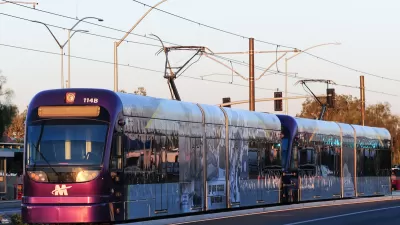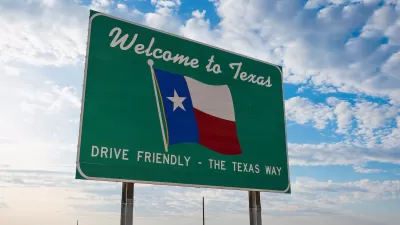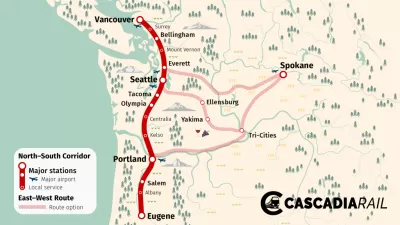A news study brings the receipts on state and regional transportation spending.

TransitCenter shares news of a recent study by the National Cooperative Highway Research Program that digs into how states spend their federal transportation money, finding that less than 4 percent of eligible federal highway funding is spent on transit projects—a decision known as “flexing.”
“Only eight states were ‘superflexers,’ transferring more than 4% of their federal highway funding to FTA: Nevada, Washington, Arizona, New York, Vermont, Oregon, Maryland, California, and New Jersey,” explains the article of the study’s findings. According to the study, the Congestion Mitigation and Air Quality (CMAQ) and the Surface Transportation Block Grant (STBG) programs were the programs most likely to be flexed for transit projects.
The report also helps understand why certain states and metropolitan planning organizations (MPOs) decide to flex their federal money to transit projects: it all comes down to “state and regional priorities.” According to the article’s explanation of the study’s conclusion, “Where state and local decisionmakers value transit, states use more of their highway dollars for public transportation.”
The article digs into more detail on the examples of Vermont and New Jersey, the former as an example of a mostly rural state, the latter as mostly urban. At the regional level, the article identifies leadership from MPOs in California and New York.
A May 2022 article by TransitCenter details how states and MPOs can flex highway dollars for transit projects.
The “Federal Funding Flexibility: Use of Federal Aid Highway Fund Transfers by State DOTs” report by the National Cooperative Highway Research Program was published in June 2022 by the National Academies of Sciences, Engineering, and Medicine.
FULL STORY: Want to Use Highway Dollars for Transit? These Places Already Do

Alabama: Trump Terminates Settlements for Black Communities Harmed By Raw Sewage
Trump deemed the landmark civil rights agreement “illegal DEI and environmental justice policy.”

Planetizen Federal Action Tracker
A weekly monitor of how Trump’s orders and actions are impacting planners and planning in America.

The 120 Year Old Tiny Home Villages That Sheltered San Francisco’s Earthquake Refugees
More than a century ago, San Francisco mobilized to house thousands of residents displaced by the 1906 earthquake. Could their strategy offer a model for the present?

San Francisco Opens Park on Former Great Highway
The Sunset Dunes park’s grand opening attracted both fans and detractors.

Oregon Legislature to Consider Transit Funding Laws
One proposal would increase the state’s payroll tax by .08% to fund transit agencies and expand service.

Housing Vouchers as a Key Piece of Houston’s Housing Strategy
The Houston Housing Authority supports 19,000 households through the housing voucher program.
Urban Design for Planners 1: Software Tools
This six-course series explores essential urban design concepts using open source software and equips planners with the tools they need to participate fully in the urban design process.
Planning for Universal Design
Learn the tools for implementing Universal Design in planning regulations.
Clanton & Associates, Inc.
Jessamine County Fiscal Court
Institute for Housing and Urban Development Studies (IHS)
City of Grandview
Harvard GSD Executive Education
Toledo-Lucas County Plan Commissions
Salt Lake City
NYU Wagner Graduate School of Public Service





























